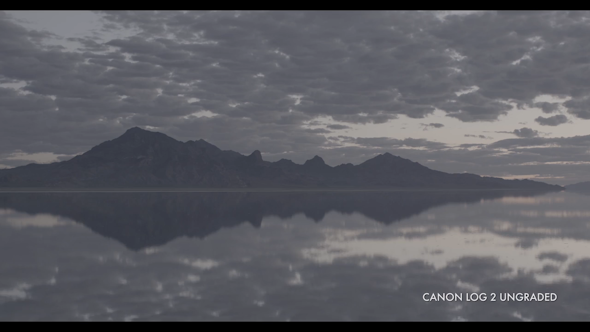Comparing C Log Profiles on the C300 Mark II
Over the lifetime of the Cinema EOS line, Canon has built three very different C Log profiles in an ongoing effort to maximize the potential of their sensors. The C300 Mark II, surprisingly, comes equipped with all three. So in the interest of science, let’s compare them!
The Original C Log is Richer, but Harder to Grade
C Log was introduced with the first generation of Cinema EOS cameras. It still finds a home on the C100 line, as well as having recently been introduced to the 5D MK IV (link to 5D article). For a log profile, it is still relatively saturated and contrasty. This is because the codecs on these earlier and lower-end cameras are still fairly heavily compressed and would not survive an aggressive grade. The original C Log strikes a delicate balance between post-production flexibility and the realities of the older sensors and 8-bit encoding it was used with. At this point, it functions more as a legacy support option used to match with older cameras.
C Log 2 is the Flattest Log Profile

C Log 2, then, can be seen as a direct reaction to that first generation of cameras. The C300 Mark II, the C700, and the C200 all record at much higher bit rates than the C100, 5D MKIV, or C300, and thus can be pushed around a lot more in post-production. C Log 2 takes all of this new-found potential and hands it straight to the end user. Canon has created a very hands-off profile that is super flat and gives the colorist or editor a huge amount of post-production flexibility. The dynamic range of this log profile is wider than either of its siblings, seeing deeper into the shadows than ever before. But hiding within those lower exposure ranges lurks artifacts like noise. Contrary to the popular belief that this log curve introduces more noise, it just simply showing it to us now with the intention that we may want to grade around it for that additional shadow detail.
Also note that there have been two iterations of C Log 2 - The second of which was introduced in firmware version 1.0.4.1.00 in July 2016. The update made great steps towards minimizing shadow noise and improving low-light performance.
C Log 3 Combines Features of Both

If the original C Log was too contrasty for your taste, and C Log 2 gave you too much to work with, then C Log 3 is the perfect middle ground. It maintains almost all of the highlight improvements that allow C Log 2 to maximize the potential of the sensor, but delivers that information in a much more friendly package that is easier on the eye and easier on the colorist. It is more contrasty than C Log 2, but not overly so. It will feel much more familiar for those original Canon Log shooters with the added benefit of additional highlight protection. But most importantly, it largely solves the shadow noise problem. If you prefer the the look of the original C Log but don’t want to sacrifice the improvements made in the years since its introduction, C Log 3 may be your answer.
In Conclusion
The C300 Mark II gives you access to all three iterations of Canon’s C Log color profiles. The original C Log was introduced to bring the joys of log recording to the low bit rate cameras of the original Cinema EOS line, but it was soon replaced by the harshly flat and supremely gradeable C Log 2 with the second generation of these cameras. Now, with C Log 3, Canon has created a happy medium that combines the best of both worlds for a profile that will be sure to please any shooter.



